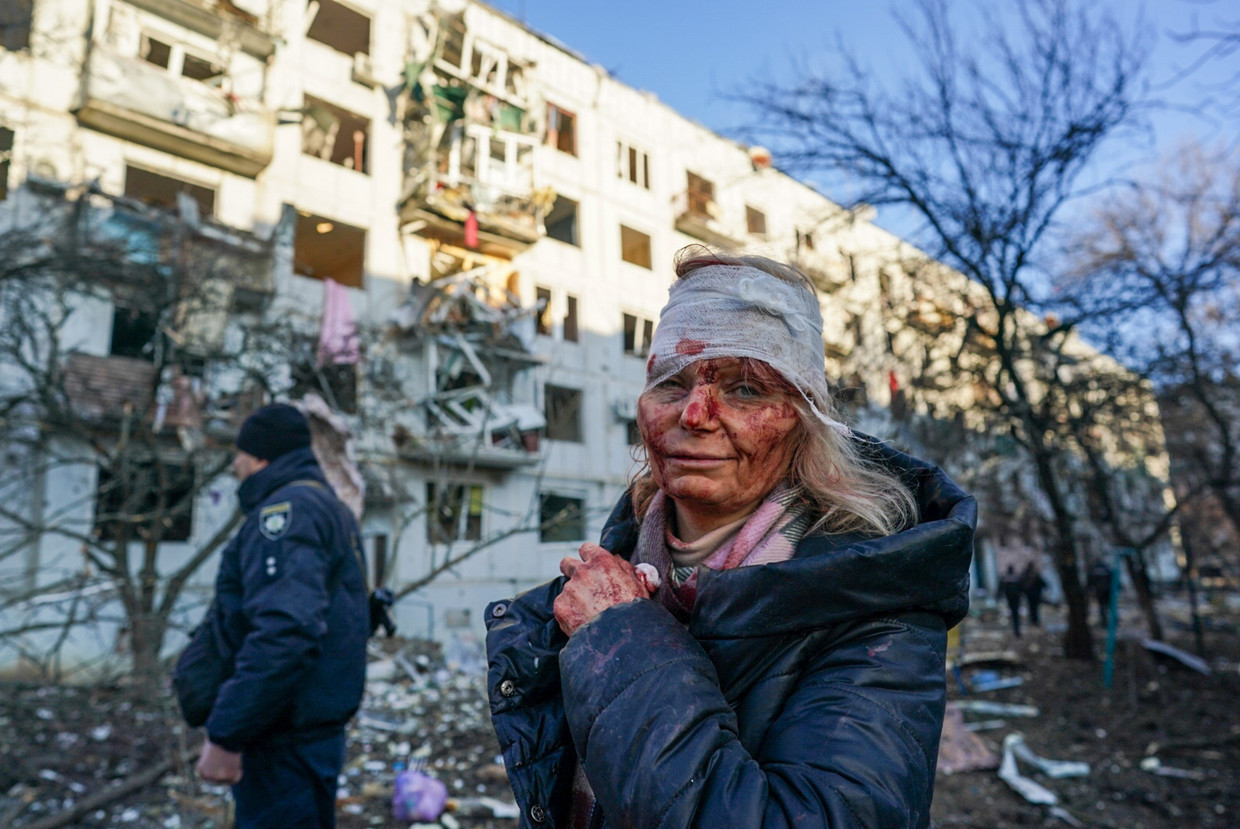
They have been viewed no less than ten million times on the TikTok video platform, the spectacular nighttime images of Ukrainian anti-aircraft fire. Only: they are not correct. Pictures are of a video game†
This is not an actual image from Ukraine but from the game Arma 3. Can be found on YouTube at Comparison. This fake video has been viewed over 10 million times on TikTok. pic.twitter.com/AalEeNEnoJ
— Marieke Kuypers (@KuypersMarieke) February 26, 2022
Nowadays, platforms such as YouTube, TikTok and Twitter are full of images or videos that appeal to the imagination, sometimes reaching millions of viewers in a day. On closer inspection, it turns out that they are not always correct. What can you do yourself?
1. Check the source of the material and post the comments
While jumping from a plane over Ukraine on February 23, Russian paratroopers film and film themselves. Cheers for TikTok. They literally capture the invasion, wrote one user below the video, which was distributed on TikTok by the Account @romanadler123 (the video has since been deleted).
Would Russian paratroopers use TikTok while hanging from their parachutes during the attack on Ukraine? No, the video turned out to be old, discovered the American fact-checking site Leadstories.com. It wasn’t that hard to figure out. Published an account under the same name on Instagram images from August 2015.
Is there a video or photo of something spectacular? Next, it is advisable to check which account is distributing the material. Is this person also active on other social networks? Is the video there? Has anyone ever questioned the material in the comments under an article? And, just as important: if possible, find out who created a photo or video.
2. Use tools
You can see Russian fighter jets flying in formation over Ukraine en route to an airstrike, in a video that many Twitter users forwarded. Until you start looking to see if the video is more mainstream on the internet. Then it turns out footage from an air show in Moscow from 2020, discovered the indian newspaper India today†
The internet is full of useful tools to tell you a bit more quickly about the material or to help you verify if something is real. For video, for example, there is the (free) tool InVid, which allows you to check whether a video has already been published. You can do the same for images via Google Image Search or Yandex. For example, the fact-checking service of the Spanish news channel Rtve discovered that a train with tanks in white camouflage paint was not on its way to Ukraine, because the Tweeter mentioned, but that the photo was taken in Belarus in 2019.
3. Seek expert help
If you don’t want to be the private detective yourself to discover the source of a photo or video, you can of course also find out from experts and reliable media specialized in this profession. Fortunately, there are more and more of them. Be in the Dutch-speaking area Peter Burger (University of Leiden), Rudy Bouma †news time) and ‘RefereeFromTweets‘ (Belgian journalist Thing) well-known names. Every day they post new sample movies and photos that aren’t authentic or are genuine, but a lot of people are saying that’s not the case. Marieke Kuypers (nearly 100,000 followers on TikTok) gives many examples of widely watched but fake videos.
In addition, the Leiden University Nieuwscheckers project compiled a list from reliable fact checks in Ukraine and other sources anyone can turn to when in doubt. This includes the European Digital Media Observatory (to which Nieuwscheckers itself is also affiliated), of them fact-checking organizations operating from Ukraine and a long listing with examples from the BBC. In addition, the Bellingcat citizen research platform has a document are online with debunked or properly verified information, for example from videos and photos that falsely indicate Ukrainian border aggression.
4. Stay calm (and suspicious)
The ironic (and confusing) thing: disinformation spreaders use the same jargon as genuine fact checkers. They also seem to do fact checks and scatter prank stickers. The big red letters “hoax” (misinformation) in a photo or video don’t have to mean anything; the pictures might as well be accurate. Take them image of a bloody woman in a destroyed building. Many twitterers reported that this photo was fake and dated from a gas explosion in 2018. Nonsense: the photo is indeed authentic. The same thing happened with the images of a Russian attack on an apartment in Chuhuiv. German picture has been described by many as a disseminator of misinformation and old images. Wrongly: these images also turned out to be authentic.
Finally, don’t press the share button too quickly. The internet will continue to exist if you don’t post the images you see on Instagram, TikTok, Facebook, or Twitter to your timeline in a minute. Do you feel strong emotions or surprise when reading a message or the strong need to share it? Stop. Press pause’, so guesses News checkers enabled.

“Infuriatingly humble social media ninja. Devoted travel junkie. Student. Avid internet lover.”
 DodoFinance Breaking News Made For You!
DodoFinance Breaking News Made For You!